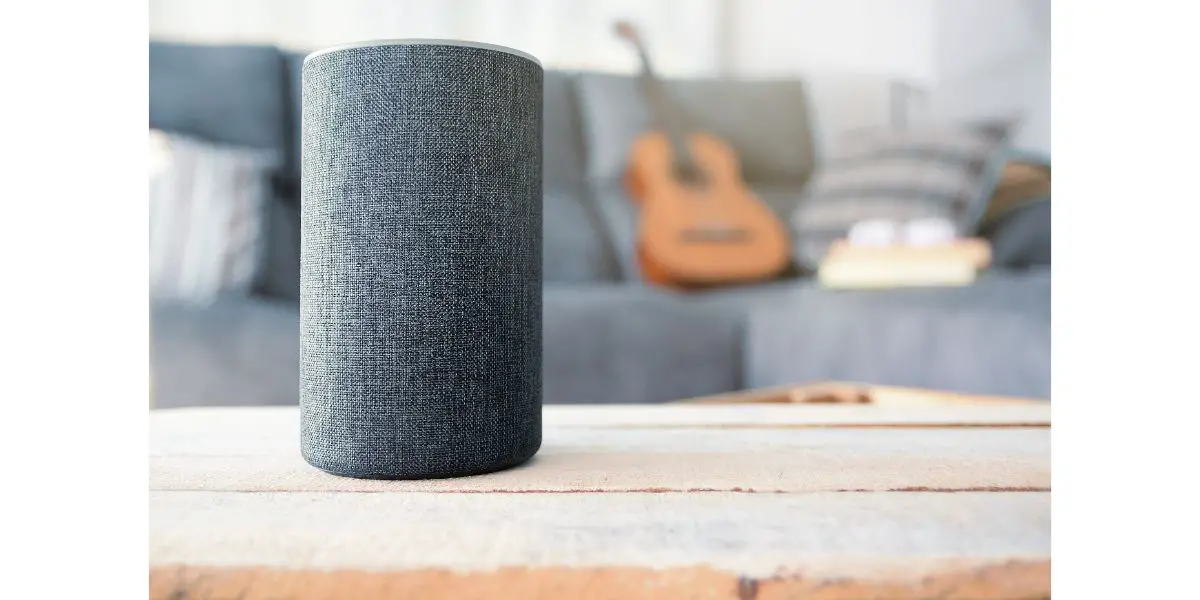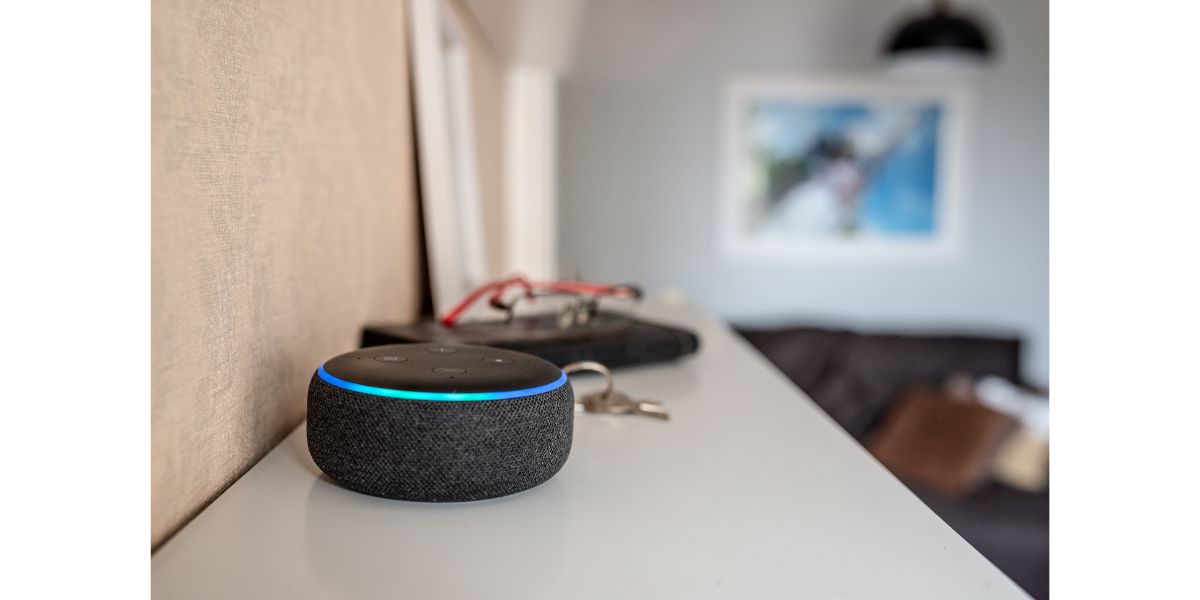Disclaimer: This post may contain affiliate links, meaning we get a small commission if you make a purchase through our links, at no cost to you. For more information, please visit our Disclaimer Page.
Amazon Alexa devices have had their fair share of ups and downs throughout the virtual assistant veterans’ long run. Certain out-of-the-ordinary things that take place tend to stick and one of those interesting quirks is the random beeps some Echo devices emit.
There are a number of things that could cause intermittent beeps, such as unintentional command words, notifications turned on, WiFi connectivity issues, “Brief Mode,” software glitches, volume issues, and defects.
That sounds like a lot but, as these things go, it’s a pretty rare thing that just happened to become a semi-viral depiction of Alexa devices. Even better, it’s often a fairly simple fix to get rid of the overly annoying beeps.
Table of Contents
6 Potential Causes & Fixes to Amazon Alexa Beeping
1. Notifications
This may not make much sense to you, depending on how many notifications you’re used to getting, whether it’s on your PC or smartphone or whatever. With Alexa, you may not realize the beeping you’re hearing are the notifications rolling in.
If you’ve ever made the horrific mistake of signing up for notifications emails from a business and watched in terror as your emails went from one or two a day to hundreds, this is what can happen with your Alexa notifications.
You can do two things to get rid of it—either turn the notifications off entirely or turn the sound off. For obvious reasons, you don’t want to turn the sound off. So, how to turn off the notifications?
If you want better control over your Amazon or Alexa-enabled devices, download the Alexa app for iOS or Android devices. You can easily turn off the notifications and make other changes as needed. On Android devices:
- Open the Alexa app
- At the bottom, right-hand sign of the screen, select the “More” option
- Go to Settings at the bottom half of the next screen
- Select “Notifications”
- Notifications are broken down into a wide variety of notification types
- Select the first one you want to turn off
- Turn off the notification
- Make your way through each type, turning off the ones you don’t want
Yeah, it might be a pain to turn off the notifications individually, but it’s what we have. On the bright side, you’ll get an idea as to what kind of notifications you’re receiving and you can keep ones that sound interesting to you.
2. Wake Word
You might be surprised at some of the “wake” words that activate Alexa. Wake words are just what they sound like, words that activate Alexa, right before you tell her something or give her a command. “Alexa” is a world-renowned wake word but you can always add a few others and there may be some already activated that you are unaware of.
Also, it’s amazing how often the TV, radio, tablet, or whatever is on in the background, will activate Alexa. There are so many sounds out there that sound just like Alexa. Sometimes, Alexa wakes up when you say a word that starts with “uhh”.
Alexa answers to “Alexa, Ziggy, Computer, Echo, and Amazon.” Fortunately, you can change the wake word any time you want and it may cut down on the number of times Alexa activates whenever anything similar to the original wake word is uttered.
- Open up the Alexa app on your iOS or Android device
- Select “Devices” at the bottom of the screen
- Select “Echo and Alexa”
- Select the device that’s giving you the problem
- Select one of the five wake words on the succeeding list
- Confirm your choice
Just remember, from that point forward, your Alexa device will only activate with the new wake word. If you changed it to “Computer,” for instance, you will only be able to activate Alexa by calling her “Computer.”
3. Communications
Alexa comes with many different uses, like messaging notifications, calls, Alexa announcements (weather, local news, packages shipping, packages arriving, etc), calls, standard notifications, and more.
Although much of the above information is awesome, especially when it’s very useful (such as severe weather alerts and breaking news), it’s not always enjoyable getting bombarded by new messages all the time. By the time you tell Alexa to let you know what your notifications are, you get an entire hour’s worth of one thing after another.
One of the things that make Alexa-enabled devices awesome, however, is that you can turn all the excess junk off.
- Open the Alexa App on your iOS or Android device
- Select “Echo ; Alexa”
- Select the device in question
- Select the Gear Icon associated with your device selection
- Scroll to the “General” section and select “Communications”
- Choose to turn off Announcements, Drop-In, or “All” Communications
If you don’t want to turn off the communications because you’re afraid you might miss something, there’s always the “Mute” button on top of the Alexa device. Press it, and the button itself or the ring around the top or bottom of the Alexa device should glow red.
As long as it’s red, it’s completely muted and Alexa will not respond to any queries. Once you tap the Mute button again, however, Alexa immediately becomes available again and will both hear you and respond normally.
4. Software Glitches
It doesn’t matter what kind of hardware you own today, if there is a computer in there somewhere, it’s going to have its fair share of glitches. Amazon Echo and Alexa-enabled devices are not exceptions to that rule of thumb.
To get rid of these, ensure that your Alexa is up to date and, if it is updated, reset the device altogether. To make sure your Alexa device is updated, ask Alexa.
- Ask Alexa if she’s updated
- If Alexa can’t figure it out, open the Alexa app
- Select Settings
- Select Device Options
- Select Check for Software Updates
- If a new update pops up, select it and follow the onscreen instructions
5. Routines
It’s often said that “Routines” are the most common culprit behind those random beeps. There are about a thousand routines you can put together within the Alexa app and if you are getting a bunch of beeps over it, someone is adding routines.
This typically happens when you have family or friends who have access to your smart home. To get rid of all these routines, all you have to do is jump on the Alexa app once again.
- Select “More” at the bottom of the Home Screen
- Select Routines
- Look through the list generated on the next page
- Select the Routine you want to eliminate
- Delete the routine
6. WiFi Connection
If you have your Echo device set up a long way from your router, it might be getting a very weak signal, something you should rectify immediately. If the WiFi signal is very weak, the Echo may drop in and out, beeping every time it does one or the other.
All you need to do is move the device closer to the WiFi or purchase a range extender/repeater to ensure there is a solid, dependable signal close to the WiFi.
WiFi signal is easily interrupted or weakened by a number of materials, such as wood, glass, concrete, brick, metal, and more. In other words, the existence of your house interrupts the WiFi signal. So, you have to get creative when you have internet-dependent devices far away from the router.
You can shift the router around, move your Alexa device to a location where it has a line of sight, or purchase an extender/repeater. The latter is the best idea if you have your router set up on one side of the house and you have devices on the other side.
Final Thoughts
The good news is, there aren’t many circumstances that will cause your Alexa device to beep randomly and annoyingly throughout the day. That means that most of you out there won’t have to mess with any of the fixes on this list. For those that do, you’re welcome.


